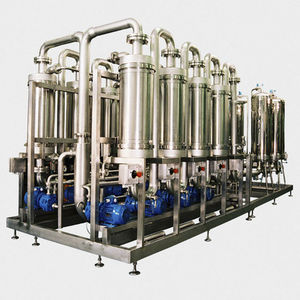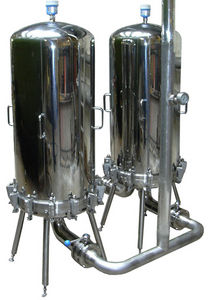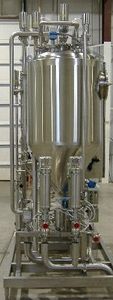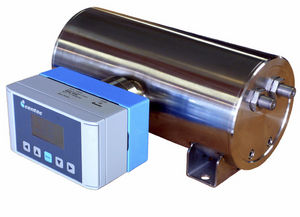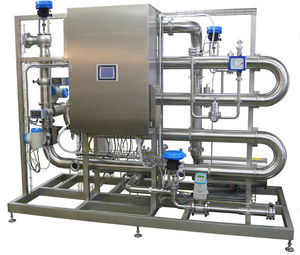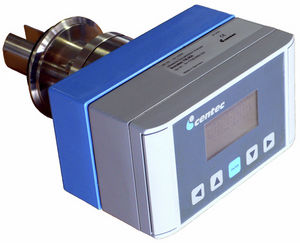
- Metrology - Laboratory
- Laboratory Equipment
- Reverse osmosis water purification unit
- Centec Gesellschaft für Labor- und Prozessmesstechnik mbH
Reverse osmosis water purification unit 1 - 500 m³/h | REVOTEC
Add to favorites
Compare this product
Characteristics
- Options
- reverse osmosis
Description
In the reversed osmosis process water is forced across a membrane, leaving the impurities behind. The permeability of the membrane can be so small, that practically all impurities, salt molecules, bacteria are being separated from the water
A water treatment process utilizing a membrane to remove dissolved minerals. The process of osmosis occurs in nature, when a pure solution is separated from a saline solution by a semi-permeable membrane. The pure solution passes through the membrane until a pressure differential is reached called the Osmotic Pressure. At this pressure differential, determined by the constituents and concentrations in the saline solution, osmosis stops. Reverse Osmosis reverses this process by applying pressure in excess of the osmotic pressure to the saline solution, forcing water through the membrane. As this occurs, most dissolved solids remain behind and are carried out with the reject stream. The purified water can then be utilized as needed.
Catalogs
No catalogs are available for this product.
See all of Centec Gesellschaft für Labor- und Prozessmesstechnik mbH‘s catalogsOther Centec Gesellschaft für Labor- und Prozessmesstechnik mbH products
Food & Beverage Industry
Related Searches
*Prices are pre-tax. They exclude delivery charges and customs duties and do not include additional charges for installation or activation options. Prices are indicative only and may vary by country, with changes to the cost of raw materials and exchange rates.




